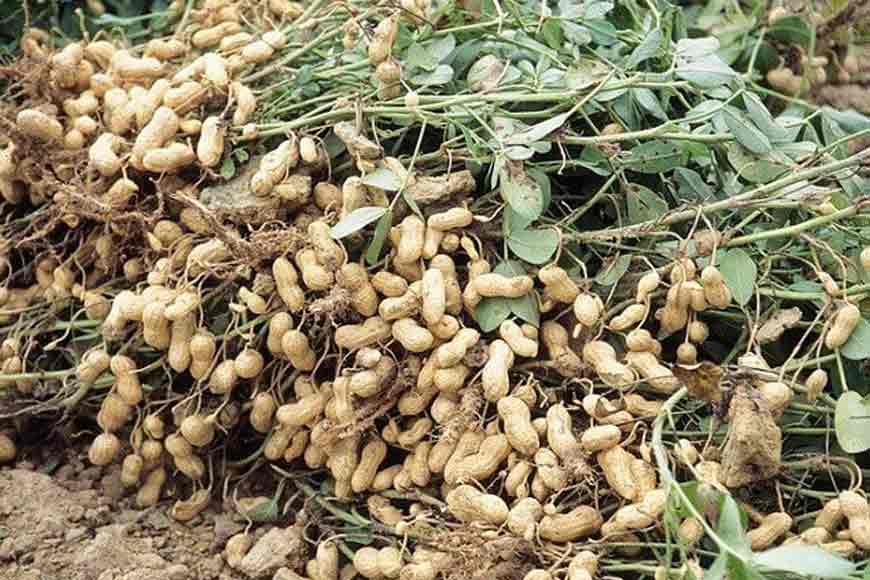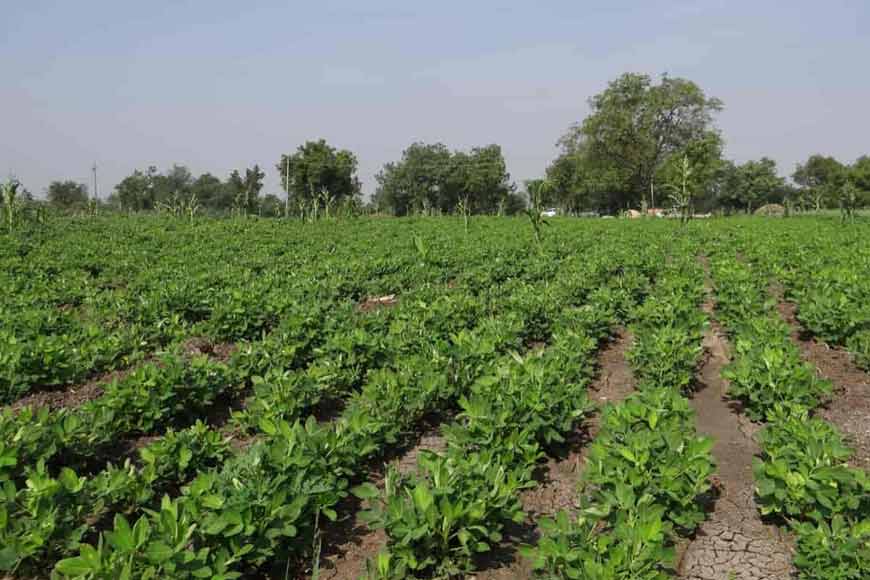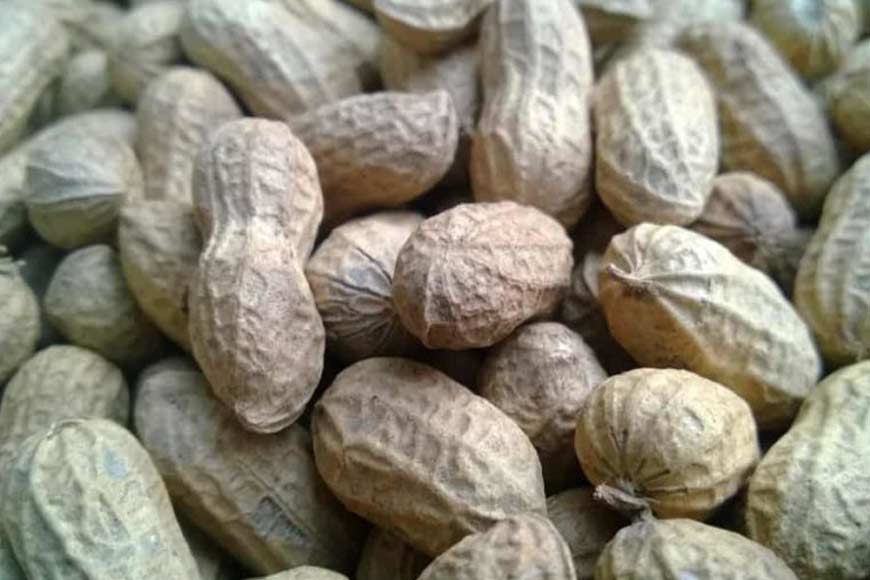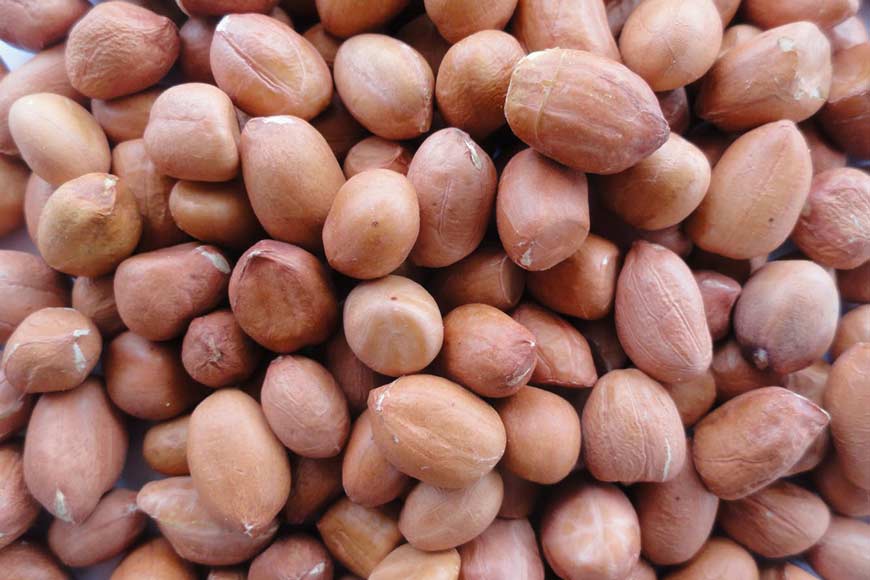Farmers of Belda opt for groundnut farming, make big profits - GetBengal story

Farmers in Belda choose to cultivate groundnuts
As inflation and expenditure are making a deep dent in the earnings of cultivators, farmers are exploring different avenues to increase their income and simultaneously earn profit by doing low-cost and mixed farming. An example of this came to light recently in the Jalahari Shankarkada area under Belda II, a village in the Narayangarh CD Block in the Kharagpur subdivision of the West Midnapore district. Animesh Das, traditionally a paddy cultivator of Belda, decided to cultivate groundnut on a large tract of land where he cultivated paddy earlier during the Boro season (summer rice, cultivated in November-December and harvested in May-June).
 Groundnut farming
Groundnut farming
Das decided to replace paddy cultivation with groundnut this time as a trial to find out if it would help him make a substantial profit from the produce. After much deliberation, he approached the Narayangarh Block Agricultural office for guidance. His idea was appreciated, and encouraged by the guidance and help provided by the officials of the Agriculture Information Advisory Centre, he took the plunge. The cultivation of groundnut is more profitable than rice cultivation. Das hopes to make a significant profit from groundnut by selling it at the current market price. His first batch of crops has already been harvested and is currently being cleaned and dried. According to agriculture department officials, cultivating groundnuts and other leguminous plants increases the fertility of the soil. This is an additional benefit that farmers can reap by cultivating groundnut.
Also read : A fruit from Mexico is changing lives in Bengal
The cost of cultivation is an important factor affecting the profitability of agriculture in West Bengal. The cost of cultivation for paddy has increased over the years and a majority of family labourers are not interested in the cultivation of paddy while being devoted to other means of economic livelihood. This compels the cultivators to depend more and more on casually hired hands for the cultivation of paddy. Percentages of fertilizers cost and rental value of owned land have also registered increases for paddy. Experts have calculated production costs and returns of different sizes of landholdings in different crops cultivation based on field survey data in the backward region of West Midnapore district and it has been found that farmers are getting relatively high net returns or profit from vegetables, mustard, and potato cultivation and relatively low returns from paddy cultivation. The net profit per hectare has increased considerably over the years for sesame, mustard, and pulses cultivation, but in paddy cultivation, the farmers earn a negative profit; so, farmers are not interested in cultivating paddy.
 Groundnut, one of the potential oilseed crops grown in India
Groundnut, one of the potential oilseed crops grown in India
Groundnut is an important oilseed crop grown in India. Globally India ranks first in area and second in production. India accounts for 31% of the total groundnut area in the world (24.6 m. ha) and 22% of the total production (35.7 mt). Major uses of groundnuts are found in soap making, cosmetics, lubricants industries, etc. The cake of groundnut is used for making artificial fiber. The green or dried leaves of the groundnut crops are called haulms and are used as livestock feed. The shell of the groundnut is used for manufacturing coarse boards, corks, etc.
Oil seeds in India definitely contribute to the agricultural economy. The importance of edible oil in one’s daily diet has resulted in increased demand for groundnut production. According to experts, it is estimated that there would be further increases in consumption levels owing to enhanced income and population. Currently, the production is inadequate to meet the demands within the country and a huge amount of edible oil is imported from other countries.

Das is optimistic that his decision will reap rich dividends. The state agriculture department is also keeping a close vigil and if this experiment succeeds, Das will be an inspiration for many other farmers who will muster the courage to switch to groundnut cultivation for sustainability and a tidy profit.










